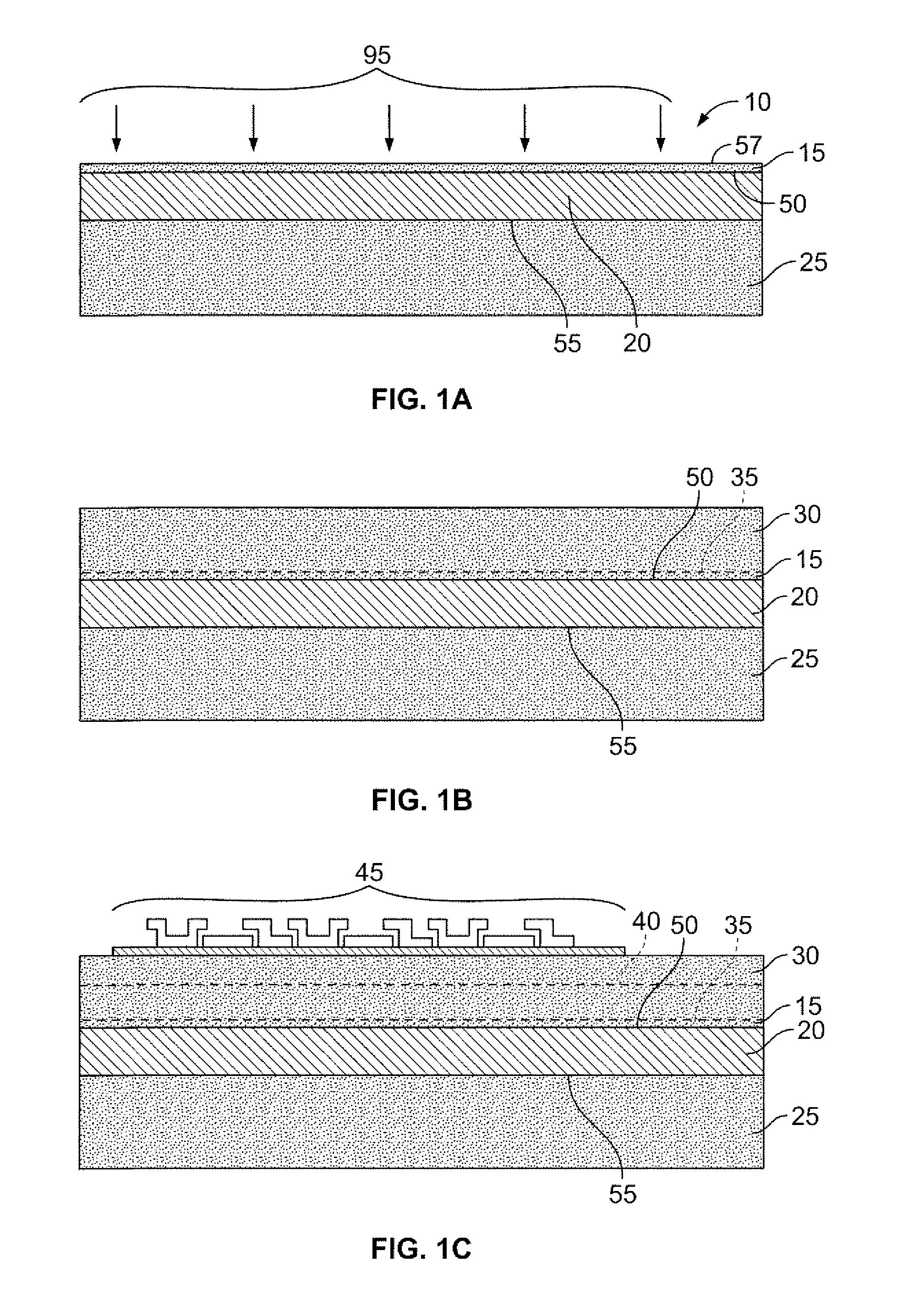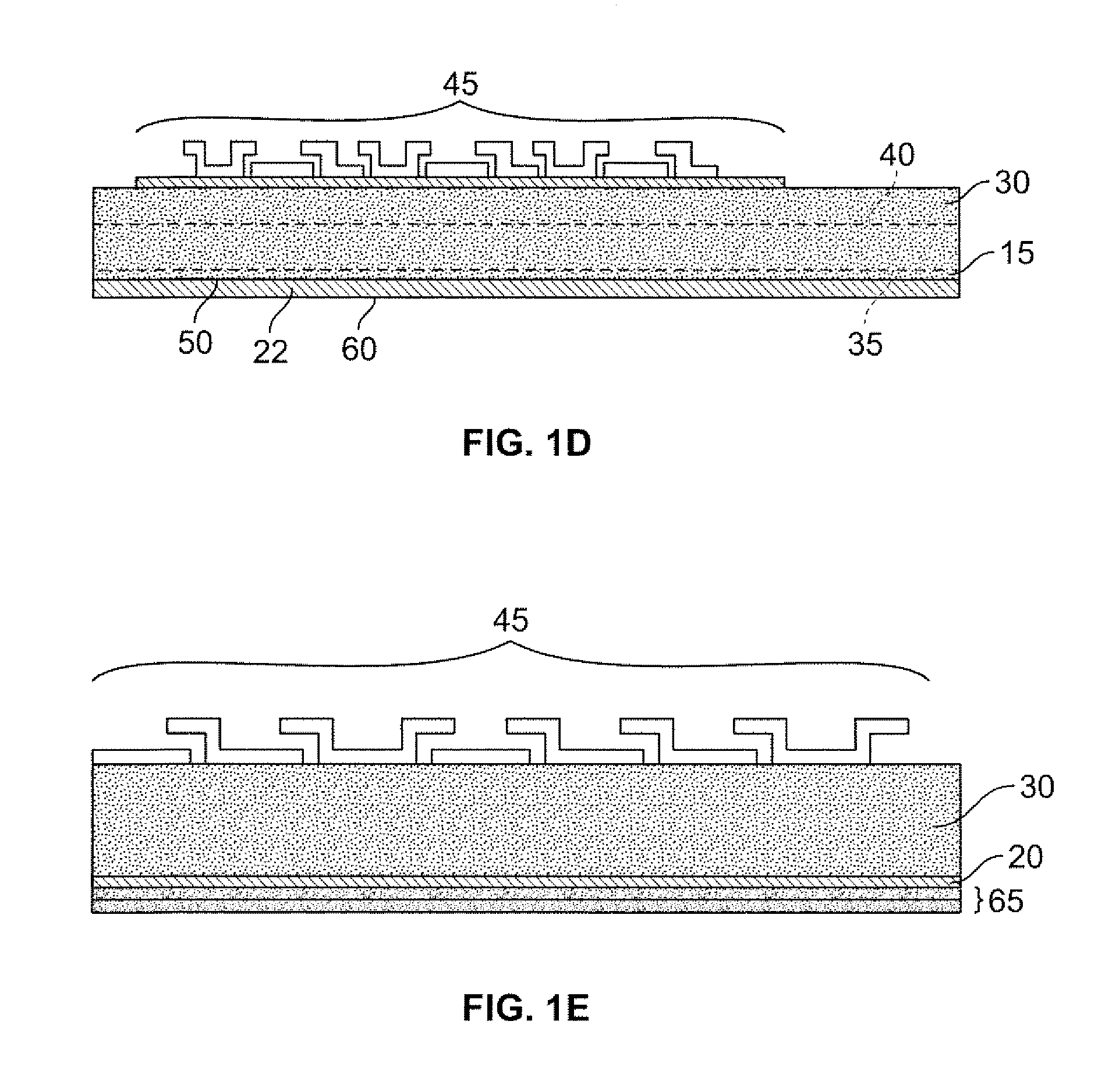Dark Current Reduction in Back-Illuminated Imaging Sensors and Method of Fabricating Same
a back-illuminated imaging and sensor technology, applied in the direction of semiconductor devices, solid-state devices, radio-controlled devices, etc., can solve the problems of reducing the overall efficiency and sensitivity of the device, adding to the complexity of the fabrication process, and methods that cannot be easily included in conventional semiconductor foundry processing, so as to reduce or eliminate the effect of dark curren
- Summary
- Abstract
- Description
- Claims
- Application Information
AI Technical Summary
Benefits of technology
Problems solved by technology
Method used
Image
Examples
Embodiment Construction
[0019] The following embodiments are intended as exemplary, and not limiting. In keeping with common practice, figures are not necessarily drawn to scale.
[0020]FIGS. 1A, 1B, 1C, and 1D illustrate an embodiment of a process and a resulting structure. FIG. 1A illustrates initial substrate 10 sometimes referred to in the art as an ultra-thin semiconductor-on-insulator (UTSOI) substrate. FIG. 1B illustrates the state of process embodiment following growth of epitaxial layer 30. FIG. 1C illustrates the state of process embodiment following a step of fabrication of imaging components 45 on and in epitaxial layer 30. As part of this step, one or more electrical junctions, or “pn-junctions”40 are formed in epitaxial layer 30. FIG. 1D illustrates a completed state of the process and the resulting imaging device. FIG. 1E illustrates the state of process embodiment following an optional step of growing one or more anti-reflective coatings. Details of each step follow.
[0021] Starting UTSOI su...
PUM
 Login to View More
Login to View More Abstract
Description
Claims
Application Information
 Login to View More
Login to View More - R&D
- Intellectual Property
- Life Sciences
- Materials
- Tech Scout
- Unparalleled Data Quality
- Higher Quality Content
- 60% Fewer Hallucinations
Browse by: Latest US Patents, China's latest patents, Technical Efficacy Thesaurus, Application Domain, Technology Topic, Popular Technical Reports.
© 2025 PatSnap. All rights reserved.Legal|Privacy policy|Modern Slavery Act Transparency Statement|Sitemap|About US| Contact US: help@patsnap.com



